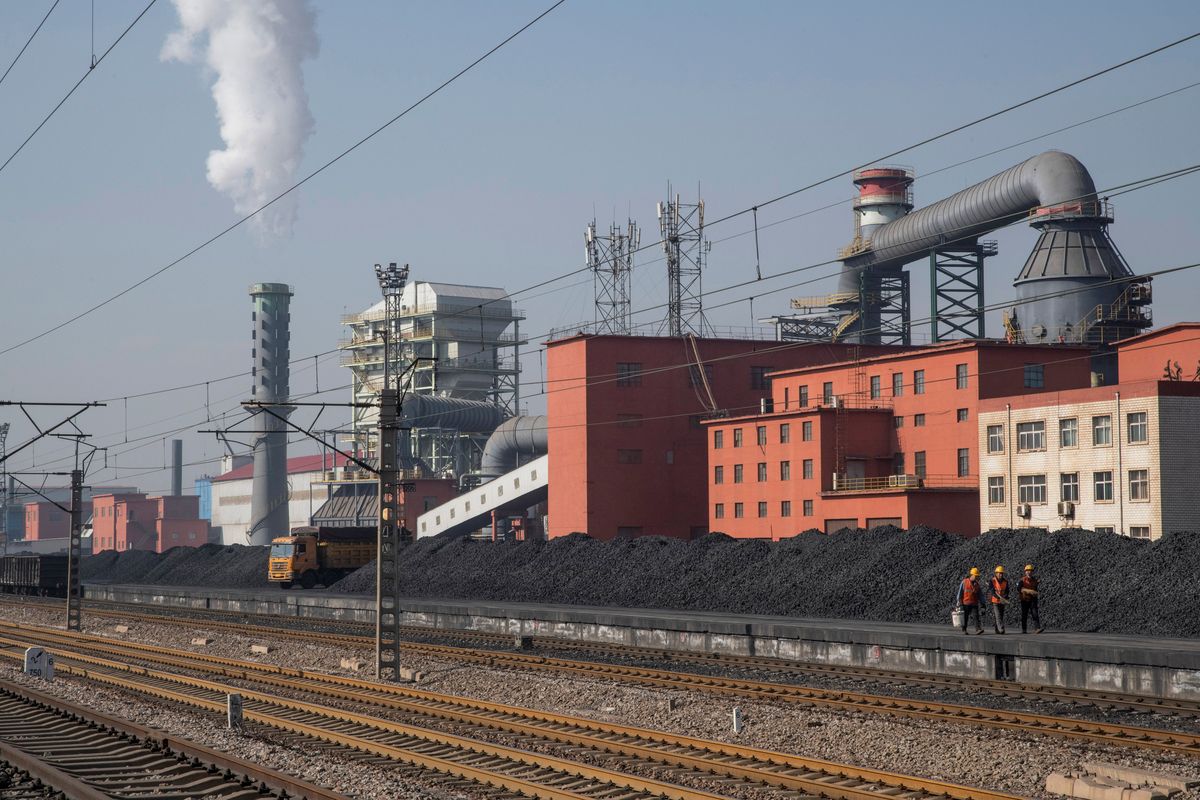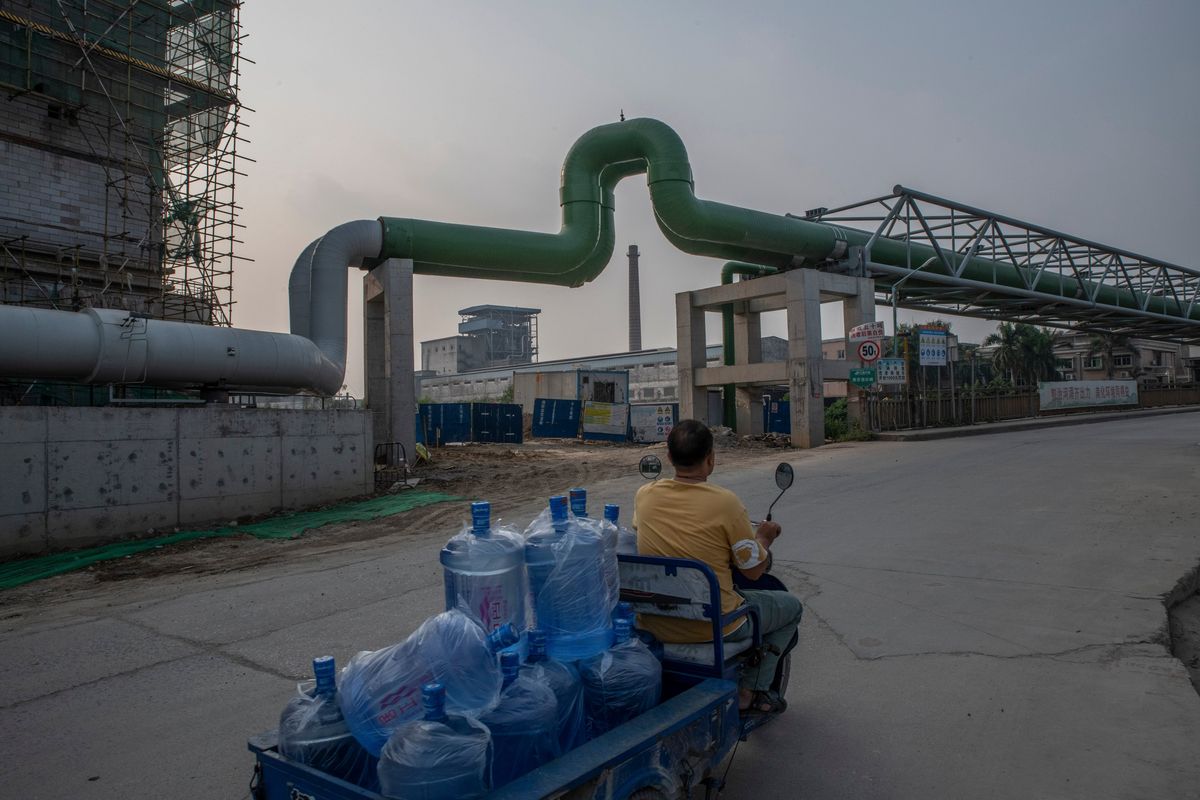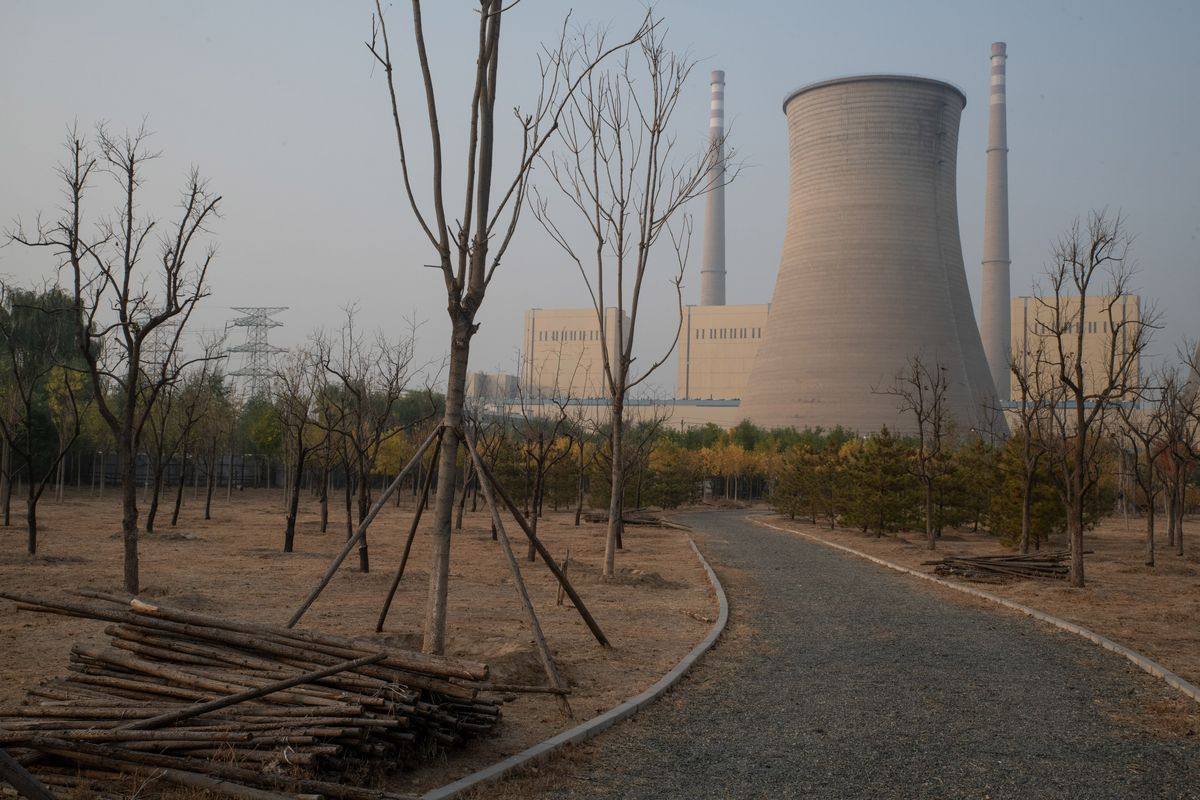In face of growing climate challenge, China is burning more coal
FILE -- A gas-fired power plant in Dongguan, China, where natural gas offers a potential bridge from coal to renewable energy, Sept. 28, 2021. With China's emissions of greenhouse gases rising last year at the fastest pace in a decade, Beijing is looking to develop renewable and nuclear energy while also maintaining its energy security. (Gilles Sabrié/The New York Times) (GILLES SABRIÉ)
HANHAOZHUANG, China – China is poised to take advantage of the global urgency to tackle climate change. It is the world’s dominant manufacturer and user of solar panels and wind turbines. It leads the world in producing energy from hydroelectric dams and is building more nuclear power plants than any other country.
But China also burns more coal than the rest of the world combined and has accelerated mining and the construction of coal-fired power plants, driving up the country’s emissions of energy-related greenhouse gases nearly 6% last year, the fastest pace in a decade. And China’s addiction to coal is likely to endure for years, even decades.
As the world’s climate negotiators gather this weekend in Egypt for their 27th annual COP gathering, China needs to balance limiting greenhouse gas emissions with its concerns about securing its own energy. The country has long viewed coal, which it has in abundance, as the best way to avoid becoming overly dependent on foreign energy suppliers and remaining susceptible to unpredictable weather, like droughts that reduce the output of hydroelectric dams.
In no country are the climate stakes higher than they are in China. Mainly because of its use of coal, China emits almost one-third of all human-made greenhouse gases – more than the United States, Europe and Japan combined.
“There is no solution to climate change without reducing China’s coal combustion,” said David Sandalow, a senior energy official in the Obama and Clinton administrations.
The big question lies in whether China will run its new coal-fired plants around the clock or only occasionally, as a backup for renewable energy. The country’s consumption of coal alone produces more carbon emissions annually than total energy-related U.S. emissions in a year.
China’s push to build more coal-fired power plants, at a cost of up to $1 billion apiece, has alarmed Western officials. John Kerry, the Biden administration’s climate envoy, warned last year that “adding some 200-plus gigawatts of coal over the last five years, and now another 200 or so coming online in the planning stage, if it went to fruition would actually undo the ability of the rest of the world to achieve a limit of 1.5 degrees” Celsius (2.7 degrees Fahrenheit) in global temperature increases.
Xi Jinping, China’s top leader, said in an October report to the Communist Party’s national congress that the country would move faster to develop renewable and nuclear energy. But he also emphasized energy security – strongly signaling a continued reliance on coal, of which China has more reserves than any other country.
“Coal will be used in a cleaner and more efficient way,” Xi said, with no mention of reducing consumption.
A look at two areas of China – the greater Beijing region and the heart of the coal mining industry in central Shanxi province – underlines the hopes and the fears of climate scientists.
The administrative region of Beijing covers an area the size of Connecticut, from broad wheat fields on the plains to the southeast to brush-covered mountain ranges topped with the Great Wall to the north.
The potential for China to rely heavily on renewable energy is visible in and around Hanhaozhuang, a village on Beijing’s border with Hebei province to the north. It is a hamlet where brick-walled sheep pens alternate with yellow and gray gourds growing on steel wire trellises.
Just beyond the pens lies a huge expanse of dark blue solar panels mounted on steel frames to keep them tilted at the correct southern angle toward the sun. The solar power farm covers five times the area of the village. Two rows of apple trees grow between each row of solar panels, providing a cash crop for residents.
A dozen miles to the southwest, in a marsh along the banks of a reservoir, stands a long row of wind turbines. They turn the strong winds blowing off the Gobi Desert into electricity for Beijing. Closer to the city, utilities have built gas-fired power plants.
These measures drove Beijing’s coal use down 95% in the decade through 2020, the most recent year for which data is available.
The last coal mine in the region closed three years ago.
But just in case the weather turns very hot or very cold, raising electricity demand, or if renewable energy slackens, Beijing has not given up on coal. The enormous Huaneng thermal power plant in the city’s southeast sits ready to fire up four coal-fired units each taller than a 10-story apartment tower.
Other regions are much further from giving up on coal. In Shanxi province, 300 miles southwest of Beijing and the heart of China’s coal country, coal companies in the past year have sharply stepped up the pace at which they carve new or expanded mines into the low, dry hills. Shanxi is also burning vast quantities of coal to power cement factories, steel mills and other industries and to generate electricity; coal consumption grew 80% in the decade through 2020. Wind and solar power are growing there, too, but those levels of production were far lower to begin with.
Natural gas – which, when burned, releases roughly half as much carbon dioxide as coal – offers a potential bridge from coal to renewable energy for China. How much China promotes natural gas instead of coal will have long-term consequences for not only its economy but also its relationship with Russia.
Gas imports from Russia are increasing rapidly from pipelines and shipped liquefied natural gas despite Russia’s invasion of Ukraine. This year, China has nearly doubled its gas imports through a pipeline from eastern Siberia. But overall, Russian gas makes up just 1% of Chinese energy consumption and less than one-tenth of China’s gas consumption. How much more China is prepared to buy from its northern neighbor is unclear and subject to intense speculation among Western officials and energy analysts.
The biggest outstanding issue is whether a larger second pipeline, known as Power of Siberia 2, will be built across Mongolia to China. The gas fields in western Siberia had been supplying Europe. But President Vladimir Putin of Russia has sharply reduced those flows to punish European leaders for opposing his invasion of Ukraine.
Russia has been eager to build Power of Siberia 2, which could supply one-tenth of China’s gas needs. But China appears to be stalling and is mulling whether to deepen its energy relationship with Moscow. China has consistently sought diversity of supply and long-term, low-cost contracts.
“China has committed to nothing yet,” said Anna Mikulska, a natural gas and Russia expert at Rice University. “They are looking for a bargain.”
China is focused for now on coal. The Beijing region’s strategy of keeping a giant coal-fired power plant to meet brief peaks in demand defies conventional wisdom in the global power industry.
Natural gas has long been seen as a better choice for meeting such peaks, because gas-fired turbines can ramp up electricity production in minutes or even seconds. Coal-fired plants can take a couple of days from a cold start.
China is now investing heavily in refitting coal-fired power plants to make them more suitable for meeting peak electricity needs, said Zhou Xizhou, a longtime specialist in Chinese energy who is now at S&P Global. Keeping coal-fired power plants running slowly – at 30% to 50% of capacity, as China is doing in some cities – allows the plants to be brought up to full capacity very quickly when there is a shortfall in renewable energy.
The danger for the climate is that electric utilities might not be satisfied with running coal-fired power plants only part of the time, said Sandalow, the former U.S. energy official. “Once the asset is built, will there be pressure to use it more?” he said.
Beijing has begun allowing electric utilities to charge far more money per kilowatt-hour for coal-generated electricity during power shortages. The cost of electricity soared in August when a drought in southwestern China caused a plunge in hydroelectric power and a wave of blackouts.
“That brings many companies to the point of considering rooftop solar panels on their factories,” said Frank Haugwitz, a longtime Chinese solar energy sector consultant. China is now installing more solar panels each year than the rest of the world combined, with the electricity generation capacity of new installations doubling again this year.
The country’s National Energy Administration has mandated that a slowly rising proportion of new solar installations must have batteries, although this makes the systems more expensive.
The goal is for solar panels to meet power needs during the day and store enough electricity in the batteries to meet local needs for another two to four hours after sunset. The batteries also provide extra time for coal-fired power plants to raise electricity output.
A peculiarity of China’s previous climate pledges gives the country’s coal industry an unusual incentive to burn as much coal as possible in the next seven years. Xi has promised that China’s net carbon emissions will peak “before 2030” and then shrink to zero by 2060.
But he has not specified how high these emissions will rise. So burning extra coal in the coming years could in theory help the coal industry keep more mines and power plants running for many more years at higher output, protecting profits and jobs.
Experts in China dismiss concerns that their country will do this. Kevin Tu, a Beijing-based fellow for the Center on Global Energy Policy of Columbia University, said China’s national government was deeply committed to reducing smog and other toxic air pollution, in addition to climate goals.
But Beijing authorities will need to watch local officials closely to make sure that they follow national policies, Tu said. “At the local government level, there are different interest groups trying to push emissions higher at the provincial level,” he said. “This would generate higher economic growth in the short term, unfortunately at the expense of the environment in the long run.”







